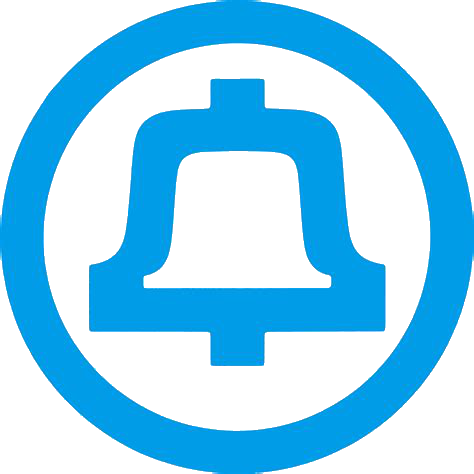Ringing machine
A ringing machine is a motor-generator set that was used by telephone companies to create the current needed to ring the bells in subscriber's telephones (referred to as machine ringing), and to create the call progress tones that a subscriber might hear while making a call. These sounds usually include dial tone, ringback tone (known as audible ringing) or busy tone. Many ringing machines also generated +/- 110 volts DC which was used for for coin telephones.
Origins
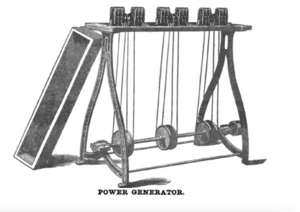
The origins of the ringing machine date back to hand cranked magnetos used in early subscriber sets and switchboards. In the late 1800s, if there was available sources of power nearby, central offices made use of powered generators to supply ringing current for their switchboards and subscribers. These could either be run by electric motors, or water turbines. The earliest ringing machines did not produce call progress tones, since progress was usually announced by the operator who was connecting the call. By the early 20th century, some machines were supplied with attachments that generated audible tones, as well as machine ringing.
P-Type Machines
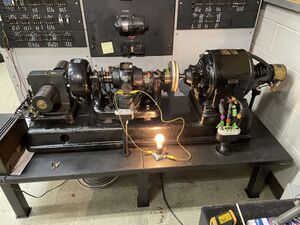
From the last decade of the 1800's to the 1920s, full service ringing machines of the P-type were used in larger Bell System offices. These machines were powered by AC or DC motors, and included a ringing generator, several tone generators, and interrupters that created the proper cadence from the output of the machines. (Although the term "P-type" refers only to the ringing generator itself, the term had been expanded to refer to the entire machine.)
P-type machines originally included tone generators that were simple commutators attached to the shaft of the ringing machine. The rapid interruption of the current as the commutator spun under the pickup brushes produced the audible tone. This type of tone generator was later replaced with the tone alternator, which instead uses three wheels with various "tooth" cutouts, similar in appearance to a gear. The wheels spin in an excited field, and induce a varying current in pickup heads placed around the periphery of the wheels. This in turn produces various audible tones that are then passed to subscribers.
Commercial Type Machines
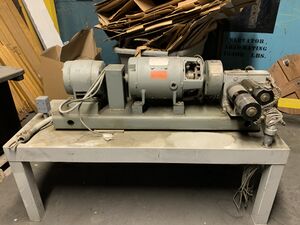
By the end of the 1920s, it had become apparent that it was no longer cost-effective to continue manufacturing the old-style P-type machines. While their use would continue in existing installations, their basic structure had not changed since the late 1800's, and newer technologies and manufacturing methods could contribute to a significant cost savings. In addition, the use of improved filters on the machine's output yielded a smoother waveform than was possible with the early P-type generators. Thus, Western Electric opted to turn to General Electric to produce ringing machines to replace the old P-type apparatus for all future large central office needs. This production continued at least until the mid 1960s.
Smaller Machines
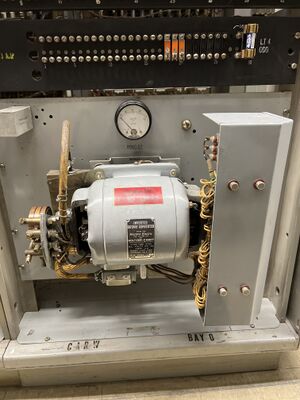
In addition to the large city ringing machines, several smaller types of motor generators were sold for use where high power output and a 24/7 duty cycle was not required. These uses included Private Branch Exchanges (PBX's), small Community Dial Offices (CDO's) and the like. These smaller machines produced many of the same general outputs as their larger counterparts, but often sounded slightly raspier.
External Links
Atlanta Telephone History: Ringing and Tones - A site with audio samples of the various types of ringing machines and tone plants.
